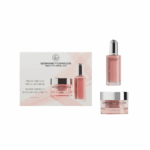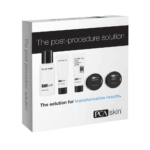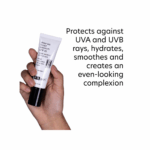No products added!
How to Exfoliate Your Face the Right Way
Exfoliation is everywhere in the skin care conversation lately, and for good reason. Done correctly, it helps sweep away dead skin cells, oil, and buildup that can clog pores—leaving your complexion smoother, brighter, and more refreshed. But here’s the catch: exfoliating too harshly or too often can do more harm than good.
So, what’s the best way to exfoliate your face without irritating it? Let’s walk through the basics, the types of exfoliants available, and step-by-step instructions to keep your skin glowing safely.
The Two Main Types of Exfoliation
There are two main ways to exfoliate:
Physical exfoliation → Uses scrubs, brushes, or tools to manually buff away dead skin cells.
Chemical exfoliation → Uses acids or enzymes to dissolve buildup without scrubbing. Examples include:
AHAs (like Glycolic, Lactic, Mandelic Acid) → Great for hydration and texture.
BHAs (like Salicylic Acid) → Ideal for oily, acne-prone skin.
PHAs (like Lactobionic Acid) → Gentle option for sensitive skin.
Enzyme exfoliants (like papaya or pineapple) → Mild, natural exfoliation.
Exfoliation is key for glowing, healthy skin—but only if done the right way. Learn how to choose the best exfoliant for your skin type, follow a safe step-by-step routine, and avoid common mistakes that can damage your skin barrier. Smooth, radiant skin starts here.
Picking the Right Exfoliant for Your Skin Type
Your skin type plays a huge role in what kind of exfoliant will work best. Here’s a quick guide:
Dry skin → Go for AHAs such as Glycolic or Lactic Acid. They smooth and hydrate at the same time. (Tip: PCA SKIN Nutrient Toner with Lactic Acid is a great option.)
Oily or acne-prone skin → BHAs like Salicylic Acid help clear oil, unclog pores, and reduce breakouts. (Try PCA SKIN Acne Gel for visible results in days.)
Sensitive skin → Stick with gentle enzyme or PHA exfoliants, such as those in PCA SKIN Resurfacing Serum. Avoid gritty scrubs or harsh brushes.
Step-by-Step: How to Exfoliate Properly
Cleanse first → Start with a gentle face wash to remove makeup, dirt, and oil.
Apply your exfoliant → Use clean fingertips or a cotton pad. For scrubs, massage lightly in circles for ~30 seconds.
Rinse well → Always use lukewarm water to avoid irritation.
Apply serum → Post-exfoliation is the perfect time for corrective serums (think brightening or anti-aging formulas).
Moisturize → Lock in hydration with a soothing moisturizer.
Don’t skip sunscreen → Exfoliation makes skin more sun-sensitive, so SPF 30+ is a must.
How Often Should You Exfoliate?
It depends on your skin and product choice:
Dry skin → 1–2 times per week.
Oily/acne-prone skin → 2–3 times per week.
Sensitive skin → 1–2 times per week, or less if irritation occurs.
The golden rule: start slow and increase gradually as your skin adjusts.
When to Avoid Exfoliating
Sometimes, your skin just needs a break. Skip exfoliation if:
You’re sunburned or already irritated.
You’re using strong actives like Retinoids that can increase sensitivity.
You have open cuts or active breakouts.
Ingredients to Avoid Pairing with Exfoliants
Some combos can backfire, causing dryness or irritation. Use these on alternate days instead:
Retinoids → Too harsh when layered with strong acids.
High-strength Vitamin C → May destabilize when mixed with acids.
Multiple acid exfoliants → Unless blended in one formula, avoid doubling up.
The Bottom Line
Exfoliation is a powerful step, but it’s all about balance. Choose the right type for your skin, follow a simple routine, and don’t overdo it. The payoff? Smooth, glowing skin that feels healthier and more resilient. And if you’re unsure where to start, a skin care professional can help you find the safest, most effective routine for your unique skin.















